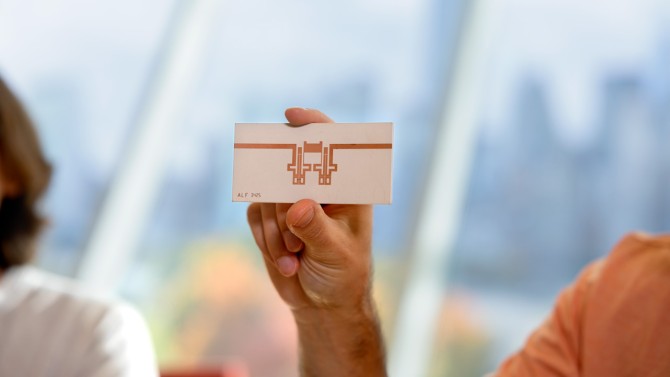Wearable devices and hospital monitors may dominate conversations about remote health care, but a new Cornell-affiliated startup is betting its future on something almost invisible: radio waves.
SensVita is developing a clinical-grade sensing platform that can track heart and lung health at home - without wires, without electrodes and without ever touching the skin.
The fledgling company has been admitted this fall to Cornell's Praxis Center for Venture Development, an on-campus incubator that helps engineering, digital and physical science startups from Cornell become self-sufficient.
"SensVita has a noncontact, passive way of monitoring cardiac activity and breath activity," said Bob Scharf, academic administrative director at Praxis. "The first human application would be for patients who are difficult to monitor - memory care patients or neonatal patients."
The idea is audacious but deceptively simple: Use near-field radio frequency sensing to detect tiny physiological movements inside the body. SensVita's sensors can sit in a room, a piece of furniture or even in clothing nearby, and continuously monitor cardiac and respiratory metrics with no burden on patients.
This could give patients and clinicians real-time data without requiring complex devices or intrusive procedures.
The technology originated in the lab of Edwin Kan, professor in the School of Electrical and Computer Engineering in Cornell Engineering, where students and researchers developed near-field coherent sensing systems that direct electromagnetic signals into body tissue to sense internal motion such as heartbeats and blood flow.
Thomas Conroy, Ph.D. '24, turned that research into SensVita while at Cornell.
"When I joined Cornell electrical engineering in 2019, I began working on noninvasive touchless health sensors," Conroy said. "I researched those for five years, taking that technology and founding SensVita in 2023. Bob Scharf was my first resource. He introduced me to lawyers to incorporate the company, and he said, 'If you want to be an entrepreneur, you should do these things and take these classes.'"
Conroy founded SensVita with his father, James Conroy, who brings experience in medical device businesses. They hope to scale the sensing platform from prototype into a commercial product that health systems, chronically ill patients and remote monitoring providers might adopt.
In addition to being admitted into Cornell's venture ecosystem, including Cornell's entrepreneurship incubator and the Jacobs Technion-Cornell Institute at Cornell Tech's Runway incubator program, in February 2025 SensVita won a $305,000 Phase I STTR grant from the National Science Foundation to push its technology toward pilot studies and commercialization.
Conroy says SensVita is targeting chronic disease management - especially heart failure, chronic obstructive pulmonary disease (COPD), sleep apnea and other conditions that demand frequent monitoring. Their belief is that continuous data can catch subtle declines in function before they escalate into costly hospitalizations.
Jonathan Katz, a system engineer with SensVita, left, and Conroy discuss the latest model of the SensVita device.
That market is sizable. Remote monitoring is already a central theme in health care innovation because frequent hospital readmissions cost billions and drive much of the burden in chronic care systems.
"We are focused on people at a high risk for going back to the hospital," Conroy said. "That's the group we want to monitor."
SensVita positions itself as complementary - not replacing ECGs or imaging, but filling the gap in "baseline" continuous monitoring. As investors increasingly look for health tech that is passive, noninvasive and easy to scale, SensVita's zero-contact model could be appealing, particularly for home settings, assisted living or for patients who resist traditional wearables.
Conroy said that before their technology can be employed in human subjects, it will be tested on animals, looking at their vital signs for changes in heart and lung health. Scharf said that access to the College of Veterinary Medicine facilitates SensVita's animal testing.
If SensVita succeeds, it could become a key supplier in the rapidly expanding remote patient monitoring (RPM) space. Many health care systems now reimburse for RPM services, and the trend toward home-based care is accelerating. SensVita's no-contact approach offers a differentiator in that crowded field, according to Scharf.
"This is technology covered by multiple Cornell patents. Everyone acknowledges Cornell is the leader in this concept," Scharf said. "With Praxis, SensVita has access to a tremendous amount of instrumentation, including million-dollar instruments, that they would have a difficult time reproducing on the outside."








